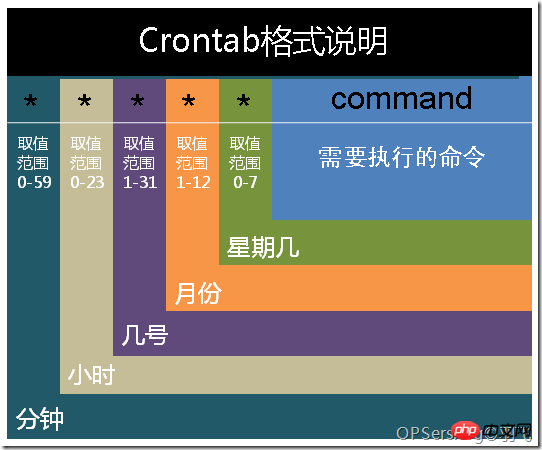引言
nginx做反向代理时,默认的配置后端获取到的ip地址都来自于nginx,用request.getremoteaddr();获取到的是nginx的ip地址,而不是用户的真实ip.
1.修改Nginx配置:
server { listen 80; server_name jenkins.local.com; location / { proxy_set_header Host $host; proxy_set_header X-Real-IP $remote_addr; proxy_pass http://192.168.10.204:8899; } error_page 500 502 503 504 /50x.html; location = /50x.html { root html; index index.html index.htm index.jsp index.action default.html; } proxy_set_header Host $host; proxy_set_header X-Real-IP $remote_addr; proxy_set_header X-Forwarded-For $proxy_add_x_forwarded_for; }
在原来的基础配置上加上后三行配置,就可以使用request.getHeader(“x-forwarded-for”)来获取用户真实的Ip地址了
2.java获取客户端Ip
package com.zimax.cqyf.admin.util; import javax.servlet.http.HttpServletRequest; import java.net.InetAddress; import java.net.UnknownHostException; /** * http工具类 */ public class HttpUtils { /** * 获取真实的ip * @param request * @return * @throws UnknownHostException */ public static String getRealIp(HttpServletRequest request){ String ip; // 有的user可能使用代理,为处理用户使用代理的情况,使用x-forwarded-for if (request.getHeader("x-forwarded-for") == null) { ip = request.getRemoteAddr(); } else { ip = request.getHeader("x-forwarded-for"); } if ("127.0.0.1".equals(ip)) { try { // 获取本机真正的ip地址 ip = InetAddress.getLocalHost().getHostAddress(); }catch (Exception e){ e.printStackTrace(); } } return ip; } }
附:一个ip工具类
import javax.servlet.http.HttpServletRequest; /** * IP地址工具类 * @author xudongdong * */ public class IpUtil { /** * 私有化构造器 */ private IpUtil() { } /** * 获取真实IP地址 * <p>使用getRealIP代替该方法</p> * @param request req * @return ip */ @Deprecated public static String getClinetIpByReq(HttpServletRequest request) { // 获取客户端ip地址 String clientIp = request.getHeader("x-forwarded-for"); if (clientIp == null || clientIp.length() == 0 || "unknown".equalsIgnoreCase(clientIp)) { clientIp = request.getHeader("Proxy-Client-IP"); } if (clientIp == null || clientIp.length() == 0 || "unknown".equalsIgnoreCase(clientIp)) { clientIp = request.getHeader("WL-Proxy-Client-IP"); } if (clientIp == null || clientIp.length() == 0 || "unknown".equalsIgnoreCase(clientIp)) { clientIp = request.getRemoteAddr(); } /* * 对于获取到多ip的情况下,找到公网ip. */ String sIP = null; if (clientIp != null && !clientIp.contains("unknown") && clientIp.indexOf(",") > 0) { String[] ipsz = clientIp.split(","); for (String anIpsz : ipsz) { if (!isInnerIP(anIpsz.trim())) { sIP = anIpsz.trim(); break; } } /* * 如果多ip都是内网ip,则取第一个ip. */ if (null == sIP) { sIP = ipsz[0].trim(); } clientIp = sIP; } if (clientIp != null && clientIp.contains("unknown")){ clientIp =clientIp.replaceAll("unknown,", ""); clientIp = clientIp.trim(); } if ("".equals(clientIp) || null == clientIp){ clientIp = "127.0.0.1"; } return clientIp; } /** * 判断IP是否是内网地址 * @param ipAddress ip地址 * @return 是否是内网地址 */ public static boolean isInnerIP(String ipAddress) { boolean isInnerIp; long ipNum = getIpNum(ipAddress); /** 私有IP:A类 10.0.0.0-10.255.255.255 B类 172.16.0.0-172.31.255.255 C类 192.168.0.0-192.168.255.255 当然,还有127这个网段是环回地址 **/ long aBegin = getIpNum("10.0.0.0"); long aEnd = getIpNum("10.255.255.255"); long bBegin = getIpNum("172.16.0.0"); long bEnd = getIpNum("172.31.255.255"); long cBegin = getIpNum("192.168.0.0"); long cEnd = getIpNum("192.168.255.255"); isInnerIp = isInner(ipNum, aBegin, aEnd) || isInner(ipNum, bBegin, bEnd) || isInner(ipNum, cBegin, cEnd) || ipAddress.equals("127.0.0.1"); return isInnerIp; } private static long getIpNum(String ipAddress) { String[] ip = ipAddress.split("."); long a = Integer.parseInt(ip[0]); long b = Integer.parseInt(ip[1]); long c = Integer.parseInt(ip[2]); long d = Integer.parseInt(ip[3]); return a * 256 * 256 * 256 + b * 256 * 256 + c * 256 + d; } private static boolean isInner(long userIp, long begin, long end) { return (userIp >= begin) && (userIp =2) return clientIps[clientIps.length-2].trim(); } return clientIps[clientIps.length-1].trim(); } private static boolean isComefromCDN(HttpServletRequest request) { String host = request.getHeader("host"); return host.contains("www.189.cn") ||host.contains("shouji.189.cn") || host.contains( "image2.chinatelecom-ec.com") || host.contains( "image1.chinatelecom-ec.com"); } }
© 版权声明
文章版权归作者所有,未经允许请勿转载。
THE END


















